This is our ultimate guide on how to plan a camping trip.
So you’ve been bitten by “the bug” and you want to embark on a camping trip. Awesome! Getting outdoors can be a refreshing and welcome break. Relax, listen to birdsong, and breathe the air of a simpler world.
As appealing as this sounds, unforgettable camping trips do require a bit of effort. Without appropriate planning, your relaxing getaway could quickly become stressful.
There were definitely several trips where I neglected basic planning. Although the stories are fun to tell now, they sure weren’t at the time!
We don’t want you to suffer the same fate. To that end, we created this guide for planning a successful camping trip.
Decide on Trip Type and Group Size
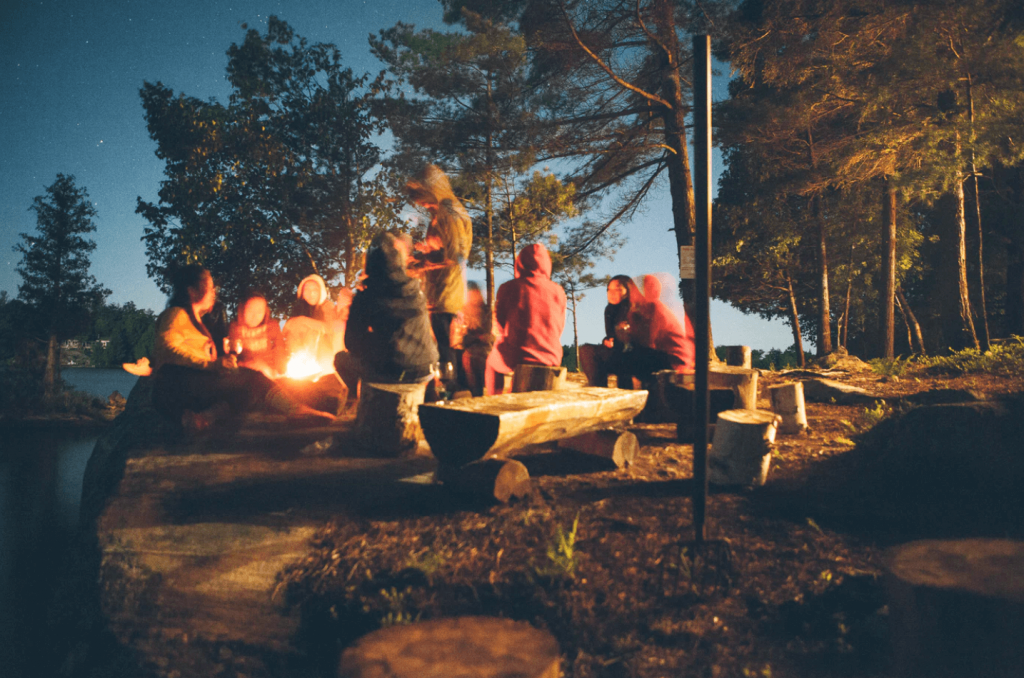
What Style of Camper Are You?
The first thing you’ll have to decide is what sort of trip this will be.
Car camping is one of the simplest options. You drive your car to a campground, pop your trunk, and unload your tent and other supplies.
There are other camping styles, of course. You’ve probably heard of backpacking and bikepacking, for instance. These are minimalist styles where everything you need is on your back or bicycle.
Then there’s glamping, which is a camping style that’s recently come into popularity. As the name implies, it’s glamorous car camping. Your trip could very well be a glamping trip if you wanted!
How Many People Will Go Camping?
If you want to camp with friends, reach out to them to find out if they want to come along.
Ideally, this should be done as soon as possible. Figuring out a firm headcount is important for any trip so you can plan and pack appropriately.
But it becomes even more crucial if your trip will include a lot of extra activities like guided tours, whose costs are based on headcount.
A brief word of caution: if you do want to go alone, just remember that doing so places an extra responsibility on you regarding your safety. Use common sense and tell people back home where you’re going and for how long.
Research Destination and Reserve Your Accommodations
It’s time to figure out where you’re going! This is easily one of the most exciting parts of the planning process.
Well, that is until you come face-to-face with those pesky logistics, like where you’re actually allowed to pitch your tent. Or when those overnight fees start to add up.
Okay, before you panic, let’s back up a little and talk about your actual destination.
Most likely, your destination will be dictated by your timeframe, preferences, budget, and time of year. But once you’ve decided where to go, it’s wise to conduct a little research on the area.
This is as easy as heading over to Google and typing things like “things to do near xyz,” or “camping near xyz.”
IMAGE
Once you’ve gotten a basic grasp of the area, it’s time to ask yourself a few questions.
What style of camper are you? Do you prefer the luxury of a campground with lots of amenities? In case you don’t know, amenities include things like running water and actual bathrooms.
Remember that if your answer is “yes,” you’ll have to pay for it. Plus you’ll likely be surrounded by other campers who also long for that feeling of home-away-from-home.
On the other hand, are you comfortable forgoing those perks in favor of the true wilderness experience? Think pure solitude – silence so thick it can be sliced open, or a sky flung with a million stars just for you.
And also think: pooping in holes you dig yourself and being militant about not storing food in your tent lest hungry predators come sniffing around.
Consider these questions carefully before you move on. There’s no right or wrong answer! It’s simply what you want out of a camping experience. Just think about what would make you happiest and go from there.
Now that we’ve covered a few basics, let’s take a deeper look at the types of location options available to you.
Generally, you have four choices:
- Public Land – Campgrounds – usually on these public lands but not always; you’re on a campground with decent amenities for a modest price
- Public Land: Dispersed/Primitive Camping – you’re on your own on land managed by the Bureau of Land Management (BLM), Forest Service, National Park Service, and the Fish and Wildlife Service
- Private Campgrounds – campground with many amenities and entertainment features for a higher price
- Private Camping on Someone’s Land – found through apps and online; price and amenities will vary
Let’s go through each of these together. You can also jump to our detailed guide on the types of campgrounds if you want to go deep into this topic.
Public Land – Campgrounds
The federal government has established plenty of actual campsites on their land. Over 13,000 of them, as a matter of fact.
These campsites offer a location and camping style for anyone. They’re perfect for those who’d rather have a few creature comforts nearby.
In addition to the basics of water and electricity, some of the campsites also offer perks like garbage cans and picnic areas. However not all campsites offer each perk; you’ll have to check with whichever site you’re interested in.
One of the downsides to using a public campsite is the associated fee. Plus, you’ll likely be near a lot of other people. So if you’re looking for wilderness experience, this isn’t for you. However, it could be perfect if you’re looking to get your feet wet.
If this piqued your interest, check out this link displaying all public campgrounds through the USA and Canada.
These campgrounds do charge a fee to camp. Don’t let that scare you though. They’re usually rather budget-friendly ranging anywhere from $5 – $40 a night.
If you’re a “partier” kind of camper, you may feel at home at a public campground. Their lower rates usually attract a younger crowd like college kids looking to have fun.
To learn more about either primitive or campground camping on public lands, click here.
Public Land – Dispersed/Primitive Camping
For those of you who dream of roughing it and getting off the beaten path, consider setting up camp on any of the 640 million acres of public land.
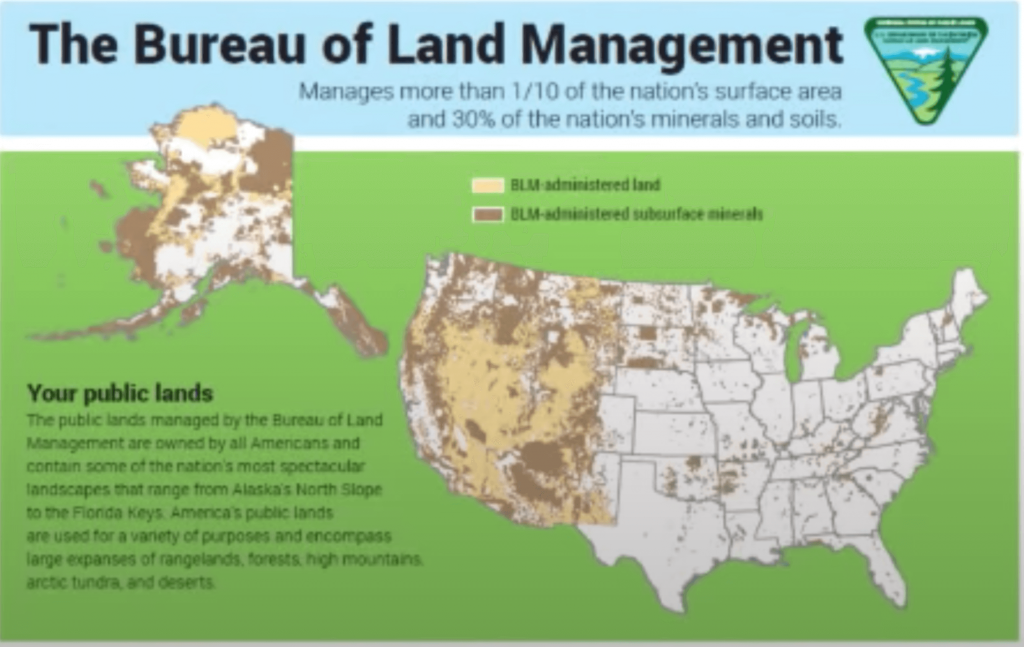
This land is owned by the federal government, which has made it available for the public’s use. And get this: it’s free!
Camping on public land in the backcountry goes by several names. It’s most commonly called dispersed or primitive camping.
The name will clue you in to the style of camping you’re in for. You pitch your tent (or sometimes, literally just a sleeping bag for the brave of heart) on the ground and call it a day. That’s it.
There are no amenities: no restrooms, potable water, or electricity. You’ve got to bring all your supplies with you. This is truly the camping experience for someone who wants to disconnect from people for a little while. Be treated to a canopy of stars unpolluted by light for miles.
Another big problem is location-based. Most of these glorious lands are out west. So, if like me you live in the east (*cue sobbing noises*), embarking on a trip out west is a big deal that demands advanced planning.
Yet for those willing to overcome these challenges, the beauty and solitude are indescribable.
Private Campgrounds
In addition to the main amenities provided by public campgrounds, private campgrounds usually offer a lot more in terms of entertainment.
Some campgrounds really go above and beyond, providing arcade games and mini-golf. At this point, it feels more like camping at a resort. But this could be perfect for those camping with families of young children.
One big thing to note: private campgrounds, contrary to their names, really aren’t private.
You’re actually more squeezed in than on public campgrounds. Why? Simple – the owner of the campground wants to maximize their dollar by placing as many people as possible on their land.
This isn’t necessarily awful though. It can open you up to some cool interactions with other friendly campers if you’re open to it. Some of the coolest memories I’ve made are from interactions like this.
Now, let’s talk about price, the other elephant in the room.
Due to the level of perks private campgrounds offer, the fees are often double that of a public campground. You could be looking at $50 – $100 a night depending on the specific campground and whether or not it’s the busy season.
Again, consider your personal situation. A private campground could be ideal for a newbie who wants to gently get accustomed to camping before diving in. Or it’s great for a family to keep the little ones happy with plenty to do.
Private Camping on Someone’s Land
If none of these options have really spoken to you, you could also rent out someone’s land and pitch your tent there.
That’s right, this is basically Air BnB for camping. But instead of renting a room, you rent a small area of the owner’s land.
This sounds weird, I know. But there’s actually a good amount of apps specifically dedicated to this. These apps connect you with landowners who allow you to camp for a fee per night.
Now, this fee will vary between people. Some offer amenities like pre-built tents. Some allow you to participate in activities on their property, such as swimming, etc.
For example, Tentrr provides campers with all the equipment. That’s right! You can skip the cost of buying your tent because a Tentrr site lets you use one of theirs!
Home Camper is for those looking for a more traditional camping experience. Book your campsite, pitch your tent, and call it a day.
Campspace is also a solid option for camping on private land. They’re a Dutch startup, so as a result, most of their campsites are in Europe (*hint hint to overseas travelers!). But American campsites are slowly coming online.
Beware Reservations!
One last huge thing bears mentioning: beware reservations! Pretty much everything we’ve listed here – public/private campgrounds, and any of the apps listed – require reservations in advance.
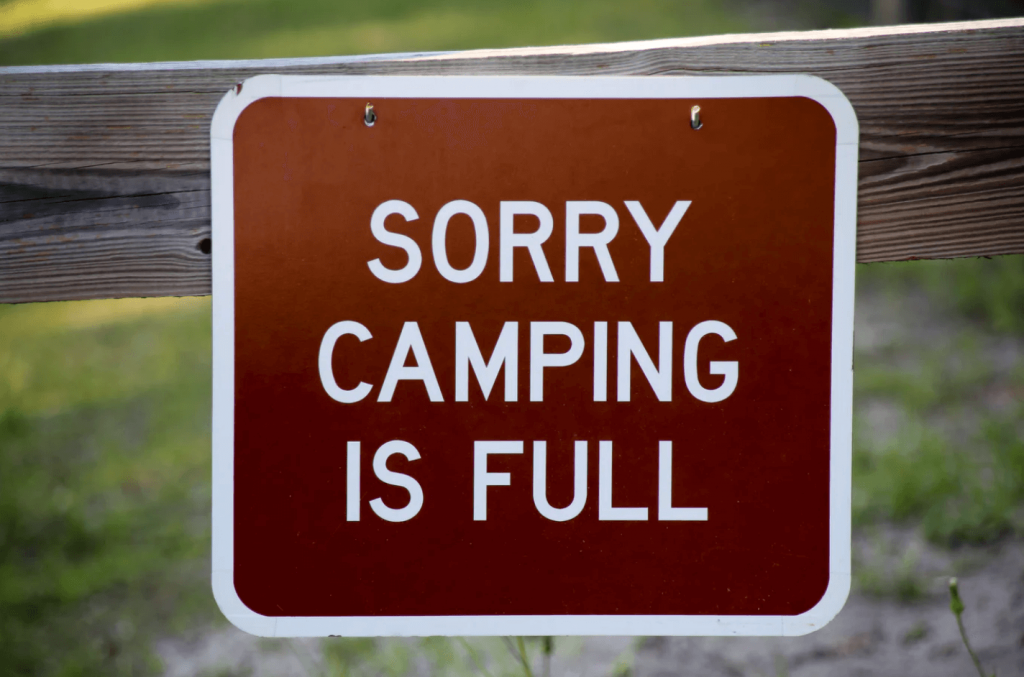
The time of the season, as well as the popularity of the campground, will dictate how far in advance you need to reserve a site.
Most recently, I went looking for a campsite near the Jersey shore for a spontaneous trip. Every last campsite was booked up! Further investigation on the campgrounds’ websites indicated that I should have booked months in advance to secure a spot.
Get this: some destinations are even more popular, requiring lotteries to even be considered for a reservation.
You heard me – for some places out west, you don’t even get to purchase a reservation directly. Instead, you need to hope your number gets drawn in a lottery!
None of this is to scare you. It’s to forewarn you that if you do have your heart set on one of these uber-popular destinations, you must plan very far in advance.
Choose Your Season/Timeframe
Like most people, you’ve likely got a job and/or school obligations to consider when choosing when you’ll take your trip.
This is important, but keep in mind a few points about the elements when choosing your trip timeframe.
We’ll go into more depth about what you can expect from camping during different times of the year.
Spring/Fall Camping (March-May and September-November)
Spring and Fall are both great times to plan a camping trip. They’re considered “off-season” for most venues, so your activities and campsite reservations will be cheaper.
Keep in mind that the weather will be very hit or miss, especially the further north you are. Here in the northeast, we’ve had snowstorms as late as April and as early as October!
In the spring, regardless of where you are (unless you’re in the desert), you’ll probably be in for an increased amount of rain. So whatever tent you pick should be one that can handle soggy weather.
Spring temperatures tend to range from 32 to 51 degrees. On the high end, it can be 51 to 73 degrees. Fall conditions are similar, with temperatures from the mid 40’s-60’s.
Across both seasons, the nights will get pretty chilly. So pack warm clothes and a properly rated sleeping bag to keep you warm throughout the night.
Finally, fall deserves a special mention for one reason: it’s amazing for camping/hiking combo trips.
The cooler climate means that you won’t be dying from the heat after a trek. Yet you also won’t be freezing. Most of all, the fiery foliage views are simply gorgeous.
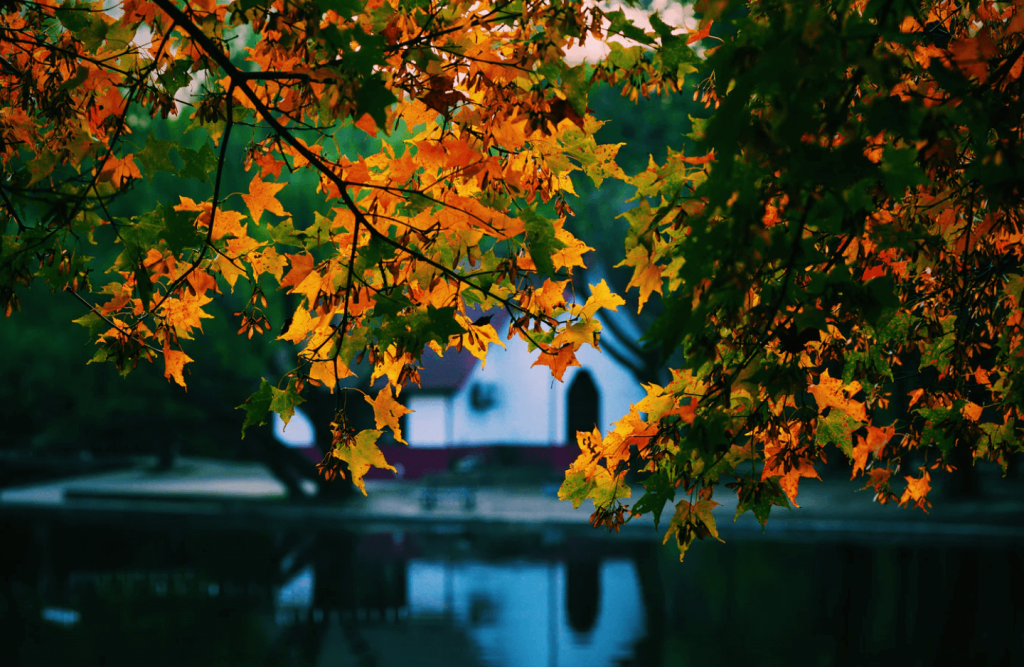
Summer Camping (May-August)
Without a doubt, summer camping is awesome! It’s easily one of the most common times to go camping. This is especially true since school’s out and workplaces often have vacation policies.
The problem with it being so awesome is that everyone else knows this too! As a result, summer is often wildly busy. Tring to get a spot at popular campgrounds is often difficult to impossible if you don’t plan far enough ahead.
But on the plus side, the temperatures of 70’s through the 90’s couldn’t be better. It’s perfect weather for lounging outside on cooler days and splashing in a lake on those scorchers.
Unfortunately, extreme heat tends to bring with it some volatile weather. These nasty thunderstorms can crop up, sometimes without warning. They’re often very windy, accompanied by driving rain, and can sometimes pelt down quarter-sized hail balls.
This isn’t to scare you. Most times you can dodge nasty weather, thanks to technology and radar maps.
But just keep in mind what you could be dealing with and plan accordingly. The worst-case scenario is that you’d go sit in your car to wait it out if needed.
Winter Camping (December-February)
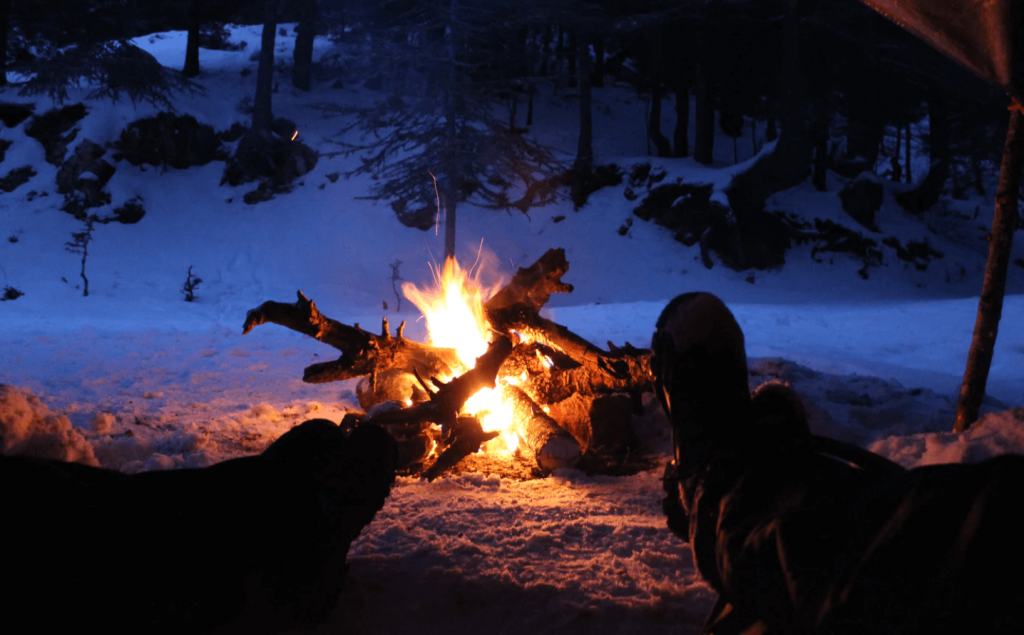
Ah, for the brave of heart. Winter camping is a special kind of lovely. The trees are stark, covered in fresh snow, and the silence is heavy. And there’s a bonus: no bugs!
If you’re the type who appreciates all of the above and also really hates crowds, this is an option for you.
When you pack accordingly, you can have a great winter camping trip. I have several friends who are really into winter camping (they refuse summer camping actually).
Because you’ll be camping in cold temperatures, your body will burn a lot of energy just keeping you warm. Thus, be sure to bring plenty of high-calorie foods and eat them often.
This also should be obvious, but make sure you bring proper clothes and layer accordingly. And absolutely no jeans! When denim gets wet, it’s a fast recipe for hypothermia because the water doesn’t evaporate quickly from the fabric.
Pack Your Gear
Figuring out what to bring with you can quickly feel overwhelming. Maybe even downright unnerving. After all, if you forget something, you can’t exactly stop in at your local grocery store.
Packing isn’t actually as scary as you might think. Let’s look at some of the essentials.
The Absolute Necessities
No matter what trip you’re taking, you’ll need some non-negotiable pieces of gear (aka camping essentials).
Sleep System
A sleep system is composed of a tent, sleeping bag, or sleeping pad.
When selecting your tent, make sure to consider how many people are going to be sharing that space. Tent manufacturers are notorious for overestimating the capacity for their tents.
In other words, if you’re camping with one other person and try to buy a 2 person tent, it’s most likely going to feel severely cramped. So we suggest buying a tent that’s one person larger than you’ll need.
Another tip is to look for a tent that features a lot of mesh. That way, you won’t feel too stuffy or hot inside. Instead, the tent will be able to breathe and so will you.
For sleeping bags, choose one rated approximately 10-15 degrees lower than the expected temperatures. Just as tent makers overstate the capacity of a tent, sleeping bag manufacturers tend to exaggerate how warm their bags are.
Sleeping bag ratings are printed prominently on the packaging. Basically, these numbers say what temperatures your bag is “rated” to keep you comfortable.
And don’t even think about skipping out on a sleeping pad. This deceptively simple piece of gear makes a world of difference to your sleep. It provides some extra cushion while also keeping some extra fabric between you, your bag, and the cold, hard ground.
Some pads are self-inflating and great for the lazy among us *raises hand*.
Keep in mind they don’t always inflate as large as some of the manually inflating pads. So choose convenience over comfort at your own risk.
Car campers who prefer the life of luxury have the option of swapping a sleeping bag and pad for an air mattress or cot.
If you do opt for a mattress, you’ll have to remember to bring a pump to inflate it.
Food, Water, and Prep
Will you be packing dehydrated meals? Or will you go old-school with canned goods and packaged foods that require more prep time?
What will you cook it with? If you use dehydrated meals, you’ll need a small, portable stove to heat up water. Or if you want to cook over a campfire, you’ll still need pots for boiling water.
For traditional meals, you’ll need to pack any necessary cookware and utensils.
How will you drink? If your campsite offers potable water (water spigots), you don’t need to worry about this one as much.
But if you’re primitive camping, you’ll need to fetch your water from a stream. Don’t forget a water purification system. This can be special tablets or a filter that attaches to your water bottle.
Clothes
Clothing will obviously be dictated by season. Regardless, you’ll want to bring at least one pair of long pants and a long shirt. Yes, this is even if you’re summer camping.
Nights get cold, so don your long-sleeved shirt and pants to stay warm. Thank me later.
- A fun tip for staying warm at night is to also bring along a survival blanket. These are super thin, but made of a special material that insulates like crazy.
Wrapping that thing partially around you at night (only partially, or you’ll wake up all sweaty!) will help insulate you from the cold and keep you plenty cozy.
Don’t forget a lightweight rain jacket for when the forecast is wet. And don’t neglect a hat for preventing sunburn on your face when there’s plenty of rays.
Bring a pair of good boots, camp shoes (sandals for lounging), and/or water shoes. This is dependent upon the activities you plan to do.
The quantity of clothes is up to you, your judgment, and how long you’ll be camping. But whatever you do, make sure you don’t bring clothes made of cotton.
Why not? Because cotton is seriously awful for any kind of outdoor activity. In the summer, it soaks up sweat and feels like a heavy blanket on your skin.
In the winter, if cotton gets wet, it’s an invitation for hypothermia. The cold moisture clings to you instead of evaporating, so this is downright dangerous.
Instead, opt for clothes made of special wicking fabrics. These can include anything with a Polyester blend. Nylon clothing is also a safe bet.
You’ll know them when you feel them. If you don’t know what I’m talking about, hit up your local camping store and go touch all the different shirts and pants. The ones you want will have a distinct soft, yet slippery-smooth feeling.
First Aid Kit
You never know when something happens, big or small. Best to be prepared with a first aid kit.
It doesn’t have to be too crazy. Ensure that it has bandages, gauze, and disinfectants for treating minor scrapes and cuts.
Miscellaneous/Optional
These are some optional items you can bring along. Leave or bring these things based on your trip and group.
- Camping chairs for relaxing around camp
- Camping lanterns for keeping the fun going after dark
- Swimsuits
- If camping with kiddos, bring a bag with all their necessary supplies and favorite toys
- Cameras and binoculars
- Board games and playing cards
A Note on Seasons
Depending on which season you choose to camp in, your gear will differ.
For instance, a summer camper will pack lots of bug spray and lightweight clothes. A winter camper wouldn’t need bug spray, but they’d have to bring plenty of layers of various clothes, along with a stove or gear to start a fire.
Create Your Budget

Yeah…don’t try to skip this one. A budget, even a loose one, can make or break your trip.
Let’s check out a few areas to allocate your spending. When drafting your budget, feel free to break it down into the categories shown below.
The Gear
Unless you have all of your gear, this will be your biggest cost. Of the items you’ll need, a tent, sleeping bag, sleeping pad, and backpack are the minimum pieces of equipment.
If you’re car camping, you can skip the backpack since most of your stuff will be hauled around in your trunk. But the tent by itself can still present a cost.
It doesn’t have to be enormous. And there are fantastic resources out there for planning a trip on a budget, such as this article.
I’d personally suggest spending around $100 on a new camping tent. You can go below that, but be warned that below that price point, the products diminish in performance. For more on this topic, read our article on how much you should spend on a tent.
Thankfully, a sleeping bag is a smaller cost, about $40-$50 for a standard 3 season bag.
Keep in mind that if you’re planning to camp in a colder season, you need to get an appropriate sleeping bag. In addition, colder weather sleeping bags are more expensive than summer bags, as they have to keep you warmer.
You’ll also have to purchase a sleeping pad. This is a foam or inflatable pad, usually around 1-2 inches thick, that you place under your sleeping bag. Expect to shell out $20-40 on a decent sleeping pad.
Food
Food is another large but often overlooked cost of camping. Let’s say you’re going camping for a week. A good rule of thumb I’ve found is to think about how much you spend on food during a given week. Then take that number and double it.
Why double it? Because camp food can be expensive. Dehydrated meals are easily the price of a restaurant meal.
You can of course opt for cheaper, like packing your own canned goods. But factor in this cost anyway. Not to mention, you may also need to resupply depending on the location and duration of your trip.
Transportation
How are you getting to the campsite? Is this a local campground? If it’s local, gas prices aren’t going to be a huge part of your budget.
But if you’re driving several hours, you’d better believe gas prices will play a huge part in budgeting.
If you’re embarking on a long-distance adventure, you may even have to factor in airfare and a rental car or Uber for actually getting to camp. These costs could easily skyrocket the transportation category above the gear cost, so adjust your areas of spending as needed.
Reservations
This isn’t huge, but still important to think about. You will need to pay a fee for reserving a camping site. Some run as low as $5-15, where others can reach $100 a night.
If you’re camping in a national park, be aware that some of these will charge admission just to get into the park in addition to the camping fee.
Plan an Approximate Itinerary
When you arrive at your campsite, now what?
Are you content to relax and spend time lounging around the campground? This may apply if you’re camping with the kiddos, or if your campground has plenty of amenities and things to do.
Or maybe you want to plan this trip specifically around a type of activity. If you want to go kayaking in the Finger Lakes, for instance, you’d obviously want to make sure you camp near the Lakes for easy access.
Of course, you don’t need an hour-by-hour breakdown of your activities. But planning at least something will keep you from sitting around in your camp chair wondering what the heck to do today.
Also note that if you’re planning on embarking on guided tours, you’ll have to pay more attention to planning activities. That’s because you’ll have to book your tours or activities in advance, so you’ll need to have a pretty firm idea of when you plan to do what.
Double and Triple Check Logistics!
This is the time to dot all your i’s and cross all your t’s. In camping terms, this means running a last check on fine-point logistics. You know, the stuff that often goes overlooked because it seems “small.”
These sorts of last-minute items include:
Have you secured any necessary permits?
Some parks or campsites require permits to camp there. Print out any copies of confirmation numbers. Keep them on your person – not in the bottom of your backpack – ready to produce if asked for them.
Double-check transportation
Print out confirmation numbers for flights, or make sure you have copies of your bus tickets.
If you’re driving, especially for longer distances, take your car in for basic servicing. The last thing you want is a breakdown on the road.
Do the last glance-over of your gear
Make sure that you remember things like your water purification system. Check for other items like sunscreen, toilet paper, and utensils.
Does your first aid kit actually have bandaids in it? Go restock it.
The Bottom Line
A camping trip can be an extremely rewarding endeavor. It can unplug you from the daily stresses of life and give you a chance to recharge.
And perhaps best of all, a camping trip can even give you a confidence boost you only get from having planned and executed an awesome trip all by yourself.
Hopefully, this guide has provided some helpful tips to planning your very own camping adventure.
Don’t forget that even when you plan and plan….well, unexpected things will still happen! “The best laid plans…” and all that, after all. That’s life! And that’s camping. Roll with it, use common sense, and have fun through it all.

















